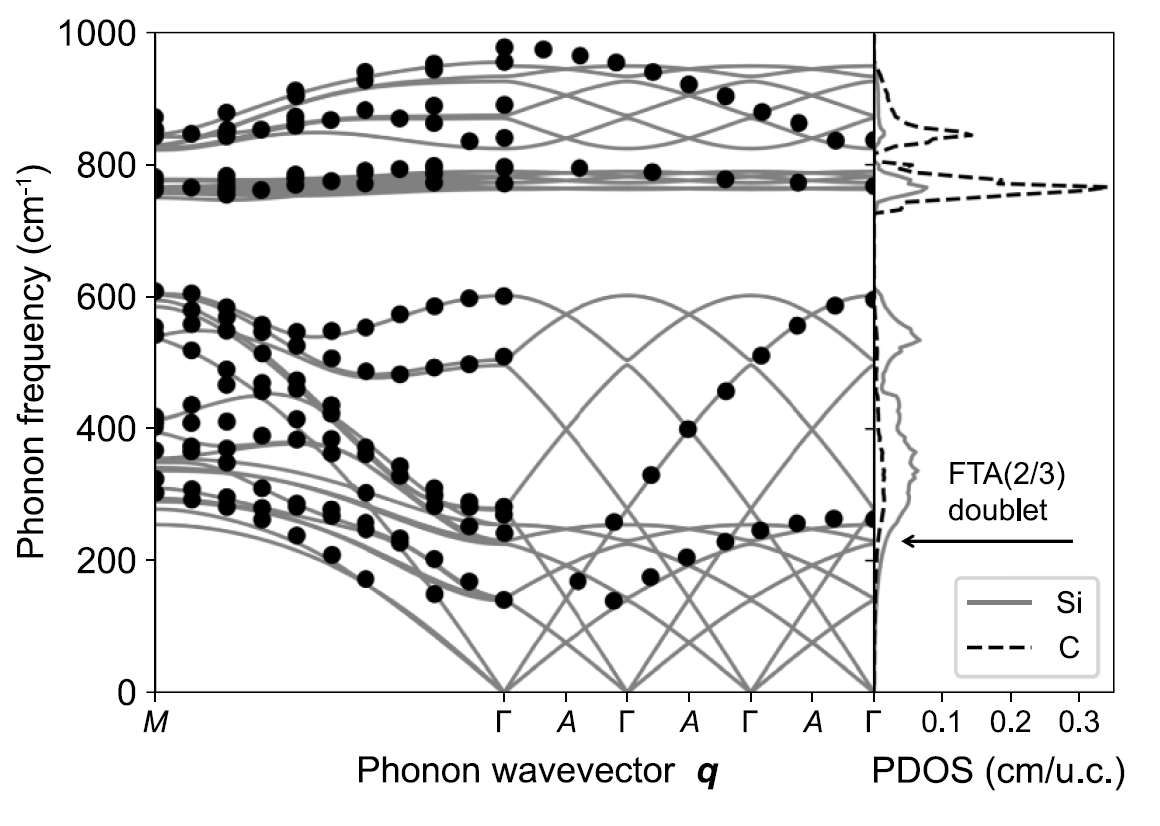
On the first day of spring, the Journal of Physics: Condensed Matter (Impact factor 2.745) published an article by our employees devoted to the study of long-lived phonons in silicon carbide (6H-SiC).
In silicon carbide crystals, the atoms are bound by ionic bonds, which ensures intense interaction of lattice vibrations (phonons) with electromagnetic radiation. It is known that stacked transverse acoustic phonons (FTA phonons) have an unusually long lifetime, but it was not possible to accurately measure it experimentally for a long time. The problem is associated with giant absorption in the region of optically active FTA resonances. As a result, the transmission of the sample at the half-height of the absorption peak is immeasurably small; accordingly, it is impossible to determine the damping of the FTA phonons and their lifetime. In this work, the problem of determining the lifetime of long-lived phonons was solved by precision analysis of the interference pattern in the immediate vicinity of the resonant absorption peaks. In this case, not only the infrared absorption spectrum was analyzed, but also the dispersion of the refractive index. The interference pattern was simulated and fitted to the experimental transmission spectrum measured with high resolution. The lifetimes of FTA phonons (which were fitting parameters) actually turned out to be extremely long: 360 and 280 picoseconds, which exceeds, for example, the lifetimes of transverse optical phonons in most polar semiconductors by 2 orders of magnitude.
The temperature evolution of the IR transmission spectra of silicon carbide was also studied and the temperature dependences of the FTA phonon lifetimes were found. The physical interpretation of the results obtained was given in the framework of the microscopic theory of crystal lattice vibrations, built from first principles.
The long lifetimes of FTA phonons (together with the high accuracy of determining the frequencies of phonon resonances) can be used in metrology and diagnostics of materials. For example, it is possible to characterize the quality of silicon carbide crystals based on the dependence of the phonon line width on the defect concentration.
Decay processes of long-lived phonons in 6H-SiC. D. A. Pshenay-Severin, R. B. Adamov, M. Ya. Vinnichenko, M. D. Moldavskaya and V. A. Shalygin.
J. Phys.: Condens. Matter 35, 175701. https://doi.org/10.1088/1361-648X/acbb4b






